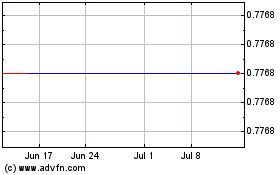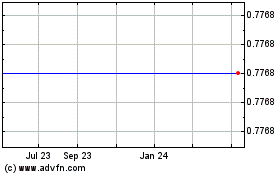UNITED STATES
SECURITIES AND EXCHANGE COMMISSION
Washington, D.C. 20549
FORM SD
SPECIALIZED DISCLOSURE REPORT
BRIGGS & STRATTON CORPORATION
(Exact name of registrant as specified in its charter)
|
| | | | |
Wisconsin | | 1-1370 | | 39-0182330 |
(State or other jurisdiction | | (Commission | | (I.R.S. Employer |
of incorporation or organization) | | File Number) | | Identification No.) |
12301 West Wirth Street, Wauwatosa, Wisconsin 53222
(Address of Principal Executive Offices) (Zip Code)
David J. Rodgers
Senior Vice President and Chief Financial Officer
(414) 259-5333
(Name and telephone number, including area code, of the person to contact in connection with this report.)
Check the appropriate box to indicate the rule pursuant to which this form is being filed, and provide the period to which the information in this form applies:
| |
x | Rule 13p-1 under the Securities and Exchange Act (17 CFR 240.13p-1) for the reporting period from January 1 to December 31, 2014. |
BRIGGS & STRATTON CORPORATION AND SUBSIDIARIES
Section 1 - Conflict Minerals Disclosure
Item 1.01 Conflict Minerals Disclosure and Report
Conflict Minerals Disclosure
A copy of Briggs and Stratton Corporation's Conflict Minerals Report for the year ended December 31, 2014 is provided as Exhibit 1.01 hereto and is publicly available at http://www.basco.com/For%20Suppliers/.
Item 1.02 Exhibit
See Item 2.01 of this Form.
Section 2 - Exhibits
Item 2.01 Exhibits
Exhibit 1.01 - Conflict Minerals Report as required by Items 1.01 and 1.02 of this Form.
BRIGGS & STRATTON CORPORATION AND SUBSIDIARIES
SIGNATURES
Pursuant to the requirements of the Securities Exchange Act of 1934, the registrant has duly caused this report to be signed on its behalf by the duly authorized undersigned.
|
| | | |
BRIGGS & STRATTON CORPORATION | | | |
(Registrant) | | | |
| | | |
/s/ David J. Rodgers | | May 29, 2015 | |
David J. Rodgers | | (Date) | |
Senior Vice President and Chief Financial Officer Duly Authorized Officer | | | |
Exhibit 1.01
Briggs & Stratton Corporation
Conflict Minerals Report
For the Year Ended December 31, 2014
Section 1: Introduction
This is the Conflict Minerals Report (the “Report”) of Briggs & Stratton Corporation (the “Company”) for the year ended December 31, 2014 (which excludes conflict minerals that, prior to January 31, 2013, were located outside the supply chain) in accordance with Rule 13p-1 under the Securities and Exchange Act of 1934 (“Rule 13p-1”). Rule 13p-1 imposes reporting requirements on registrants who manufacture, or contract to manufacture, products that contain conflict minerals that are necessary to the functionality or production of the products. Conflict minerals are defined to include columbite-tantalite (coltan), cassiterite, gold, wolframite, or their derivatives, which are limited to tantalum, tin, and tungsten (collectively, “3TG”).
The Company is the world’s largest producer of air cooled gasoline engines for outdoor power equipment. It designs, manufactures, markets, sells and services these products for original equipment manufacturers (“OEMs”) worldwide. In addition, the Company markets and sells related service parts and accessories for its engines. Through its wholly owned subsidiaries, the Company is also a leading designer, manufacturer, marketer and seller of generators, cleaning systems, snow throwers, lawn and garden powered equipment (primarily riding mowers), high quality towable light towers, industrial heaters, solar LED arrow boards and related service parts and accessories.
Section 2: Due Diligence Framework
In accordance with U.S. Securities and Exchange Commission (“SEC”) rules, the Company undertook a reasonable country of origin inquiry and due diligence efforts to determine whether the 3TG in the products it manufactures, or contracts to manufacture, that are necessary to the functionality or production of the products, originated in the Democratic Republic of the Congo or an adjoining country (the “DRC” or the “Covered Countries”) or are from recycled or scrap sources. The Company designed its due diligence measures to conform, in all material respects, with the internationally recognized due diligence framework set forth in the Organisation for Economic Cooperation and Development (“OECD”) Due Diligence Guidance for Responsible Supply Chains of Minerals from Conflict-Affected and High-Risk Areas (the “OECD Framework”) and related supplements for each of the conflict minerals.
Section 3: Due Diligence Measures Undertaken
The Company’s due diligence efforts for 2014, which included the five steps of the OECD Framework, are set forth below:
Step 1: Establish Strong Company Management Systems
| |
• | Maintained a conflict minerals group and governance structure, which defines the individuals and functional areas, including executive level support, involved in governing the Company’s conflict minerals program, and sets forth specific roles and responsibilities for those involved in governing the program. The primary responsibilities of the conflict minerals group include reviewing and approving the due diligence measures undertaken to comply with Rule 13p-1 and overseeing the preparation of Form SD and this Report. |
| |
• | Maintained a policy statement with respect to sourcing conflict minerals from the DRC. The policy states that the Company is committed to sourcing parts, components and materials from suppliers that conduct business with a high degree of integrity and in a socially and environmentally responsible manner, that suppliers must provide the Company with completed conflict minerals declarations annually and cooperate with any other due diligence that may be necessary in connection with its compliance efforts, and that the Company may stop doing business with any supplier that fails to comply with the policy. The policy statement is posted on the Company’s website at http://www.basco.com/For%20Suppliers/. |
| |
• | Provided further communications and training about the Company’s conflict minerals policy statement, Supplier Code of Conduct and the terms and conditions of its purchasing contracts to address due diligence requirements regarding conflict minerals to existing suppliers and Company employees, notified new suppliers of the Company’s conflict minerals policy statement, and maintained a grievance mechanism to enable reporting of grievances. |
| |
• | Retained conflict minerals program documentation in accordance with the Company’s existing corporate retention policy and procedures. |
Step 2: Identify and Assess Risk in the Supply Chain
| |
• | Conducted a survey based on the Electronic Industry Citizenship Coalition (“EICC”) and Global e-Sustainability Initiative (“GeSI”) Conflict Mineral Reporting Template with the suppliers identified during the assessment of the Company’s supply chain and reasonable country of origin inquiry that the Company believed represented a risk of supplying parts or components that may contain 3TG from one or more of the Covered Countries. |
| |
• | The returned survey responses were reviewed and recorded. Based on responses, certain suppliers were subject to follow up for clarification and requests for additional information. |
| |
• | Requested certifications from suppliers affirming that the information contained in the supply chain survey was accurate and that the supplier will comply with the Company’s Supplier Code of Conduct, as well as its conflict minerals policy statement, and the terms and conditions set forth in its purchase contracts. |
Step 3: Design and Implement a Strategy to Respond to Identified Risks
| |
• | A summary was prepared on a periodic basis stating the results of the risk assessment process and the procedures performed. |
| |
• | Suppliers who did not respond, or who provided incomplete or inconsistent responses, were flagged for additional follow up and clarification. |
Step 4: Third-Party Audit of Smelters/Refiners’ Due Diligence Practices
The Company is a downstream consumer of 3TG and is many steps removed from smelters and refiners who provide minerals and ore. The Company does not purchase raw ore or unrefined 3TG, and does not, to the best of its knowledge, directly purchase these minerals from any of the Covered Countries. Therefore, the Company does not perform or direct audits of smelters and refiners within its supply chain.
Step 5: Report Annually on Supply Chain Due Diligence
This Report and the associated Form SD, which were filed with the SEC, are also available on the Company’s website at http://www.basco.com/For%20Suppliers/.
Section 4: Determination
For purposes of this Report, the Company grouped its products into the following categories: engines and outdoor power equipment including lawn and garden products, generators, cleaning systems, and snow throwers. On the basis of the due diligence measures described above, the Company does not have sufficient information from its suppliers or other sources to conclude whether the 3TG in the Company’s products originated in the Covered Countries, and, if so, whether the 3TG was from recycled or scrap sources.
Further, based on the due diligence procedures performed, the Company is unable to determine the facilities used to process the 3TG or their country of origin. The Company’s efforts to determine the mine(s) or location of origin with the greatest possible specificity included the use of the due diligence measures described above.
As noted above, the Company also manufactures, markets and sells job site products including high quality towable light towers, industrial heaters, and solar LED arrow boards. The Company acquired that business (Allmand Bros., Inc.) in August 2014; therefore, in accordance with SEC rules, the Company has not performed due diligence procedures on such products for this Report.
Section 5: Steps to Improve Efforts to Mitigate Risk
The Company intends to take the following steps to improve the number and quality of supplier responses in the next compliance period and to mitigate any risk that the 3TG used in the Company’s products may benefit armed groups:
| |
• | Conduct ongoing communication and training with suppliers and relevant employees related to the responsibilities and expectations of the Company’s conflict minerals policy statement and procedures. |
| |
• | Contact suppliers that have been flagged for additional follow-up and clarification. |
| |
• | Continue assessing and responding to supply chain risks, including supplier adherence to Company policies. |
Section 6: Independent Audit
For 2014, pursuant to SEC rules and related guidance, an independent private sector audit of this Report was not required.
Briggs and Stratton (NYSE:BGG)
Historical Stock Chart
From Mar 2024 to Apr 2024

Briggs and Stratton (NYSE:BGG)
Historical Stock Chart
From Apr 2023 to Apr 2024
